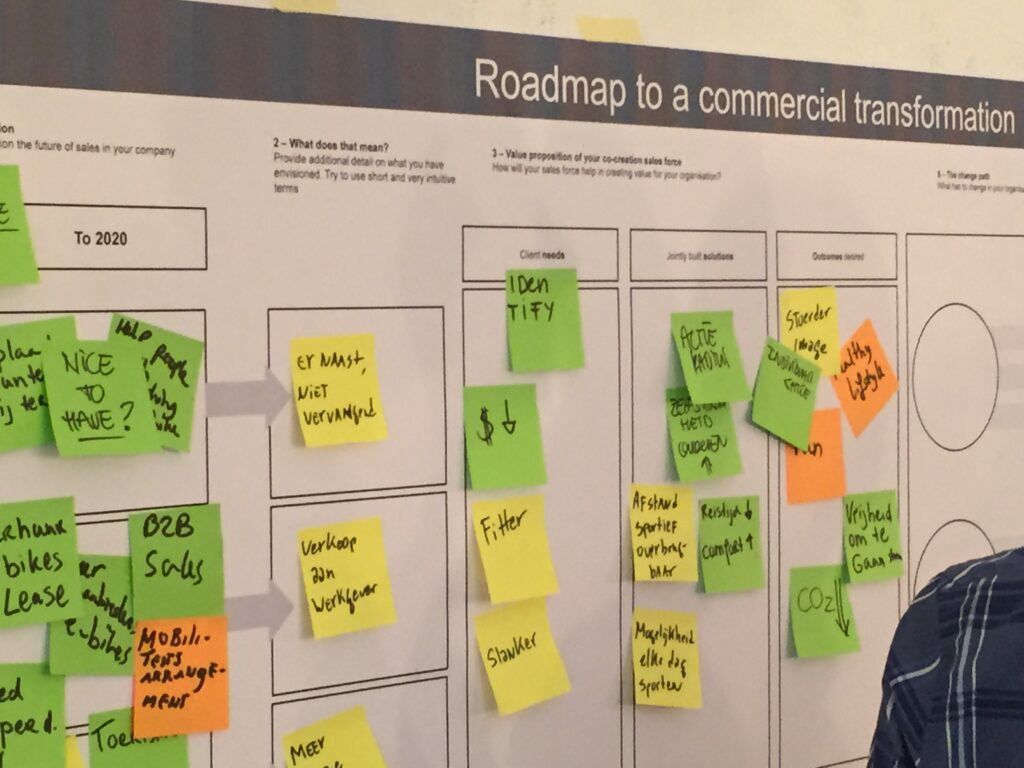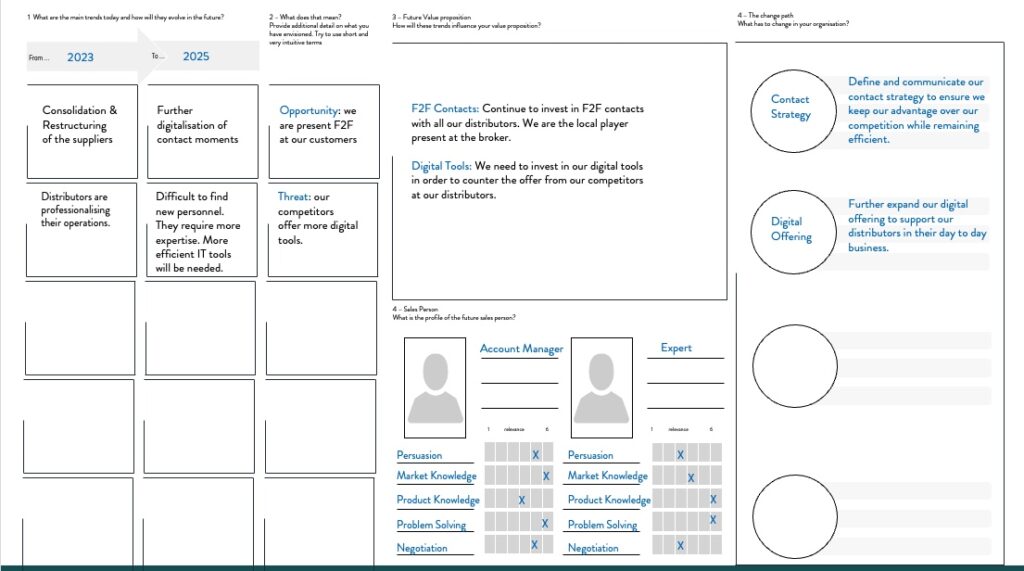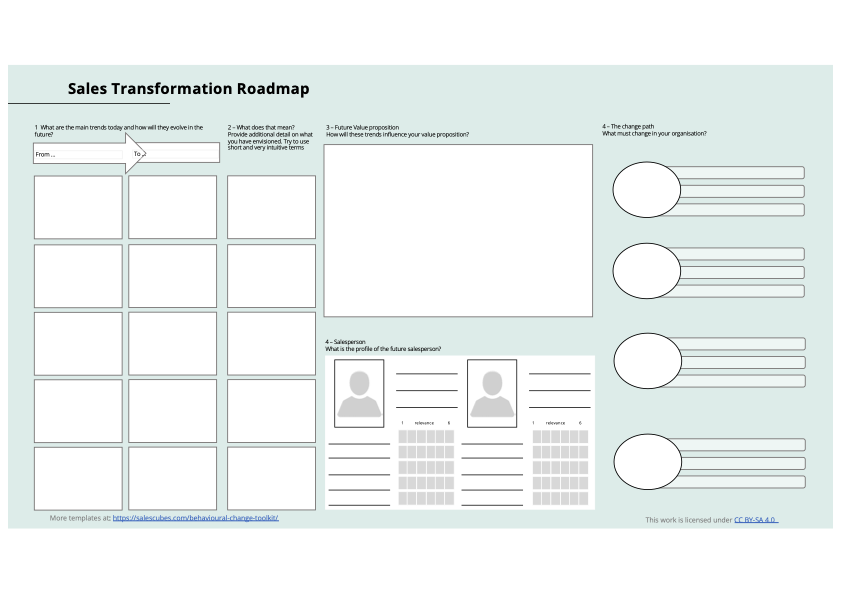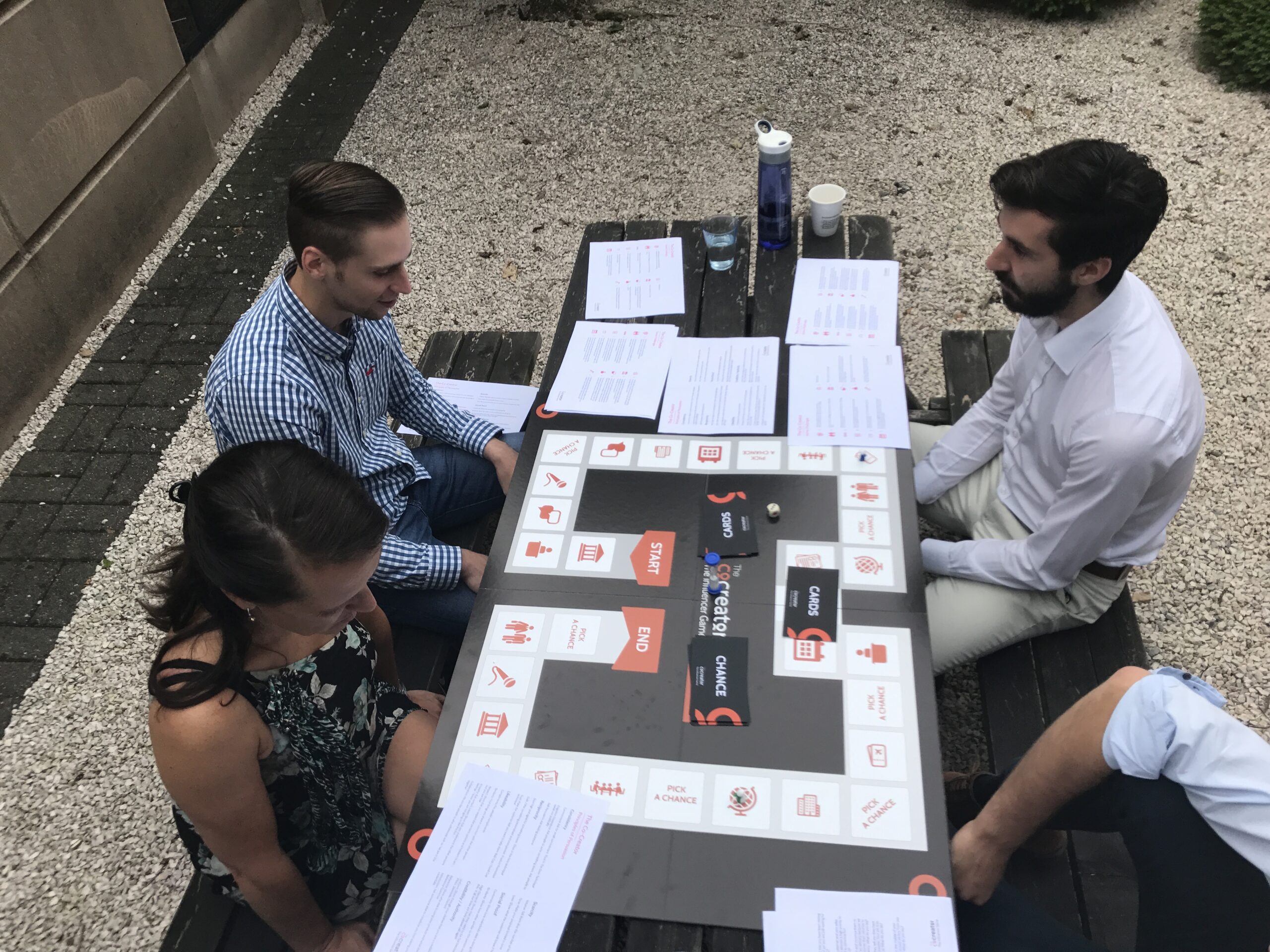What is it?
This template is designed to guide group brainstorming on sales strategy, starting from high-level market trends and leading to the initiation of relevant organizational actions. The canvas is particularly effective for facilitating sales-focused strategy workshops. It prompts participants to pinpoint key market trends significantly affecting the organisation, envision their future evolution, and determine their potential impact. This tool aids groups in connecting their Value Proposition to market changes and identifying the competencies the sales team will need to adapt effectively.
Useful For:
-
- Identifying major market trends and understanding their influence on the sales organization and its value proposition.
-
- Demonstrating the relationship between market trends and the necessity for specific changes within a sales organization.
-
- Recognizing the future competencies sales personnel will need to successfully adapt to these evolving trends.
Application:
The canvas is versatile and can be applied in several contexts:
-
- Strategy Sessions: Enables sales executives to collaboratively pinpoint key market trends and assess their implications for the sales organization.
-
- Workshops: Facilitates discussions among participants to recognize significant market trends and strategize the company’s response.
-
- Awareness Building: Helps sales personnel comprehend the connection between major market trends and the necessity for adaptations in both the sales organization and their individual sales competencies.

Sales Transformation Roadmap Canvas during a workshop session at Design Thinkers Group in Amsterdam.
Process:
Step 1: Identify Current Trends
List the top five major trends in your market, including market trends, customer behaviour changes, and shifts in value propositions.
Example:
-
- Communication Trend: “Hybrid Models – Bridging Digital and Physical”
-
- Customer Loyalty: “Lower Switching Costs, Increased Tendering”
Step 2: Identify Future Trends
Project how these major trends might evolve in the near future.
Example:
-
- Communication Trend: “Metaverse – Immersive Virtual Sales Environments”
-
- Customer Loyalty: “Proactive Deal Winning”
Step 3: Impact on the Organization
Assess the potential impact of each trend on your organization, considering both opportunities and threats.
Example:
-
- Communication Trend: Opportunity to conduct demos and meetings from the office with the impact of face-to-face interactions.
-
- Customer Loyalty: Threat of needing more proactive account management to retain business.
Step 4: Impact on the Value Proposition
Reflect on how these changes might alter your value proposition. Use a four-box matrix (Blue Ocean Strategy) to guide your thinking: What to stop, start, do more of, and do less of.
Example:
-
- Start organising yearly strategic alignment meetings with customers.
-
- Explore new technologies for remote sales meetings.
-
- Reduce non-strategic face-to-face meetings.
Step 5: Identify Roles and Competencies Needed
Determine which roles will be affected by these changes and the competencies required.
Example:
-
- New Role: Tender Managers.
-
- Competencies: Project Management, Leadership, Communication, Legal and Regulatory Knowledge.
Step 6: Identify Main Initiatives
Outline the key internal projects necessary to implement these changes.
Example:
-
- Train account managers in Strategic Selling.
-
- Hire and train two Tender Managers.
Example:

Tool



